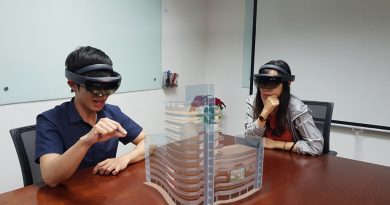The Metaverse’s Potential in Healthcare: From Mental Health Therapy to Surgical Training, Virtual Reality Is Being Used to Improve Patient Care and Treatment
The metaverse has the potential to revolutionize healthcare through virtual reality technology, from mental health therapy to surgical training and telemedicine consultations. Improving access to healthcare for remote and underserved populations.
The metaverse refers to a virtual world that encompasses all digital spaces. It is a collective virtual shared space, created by the convergence of virtually enhanced physical reality and physically persistent virtual reality. In healthcare, the metaverse has the potential to revolutionize patient care and treatment by offering new forms of therapy, training, and telemedicine. Virtual reality technology can be used to create immersive simulations that can help patients with mental health issues, and surgeons can train on virtual patients before performing procedures. Additionally, telemedicine can be enhanced through virtual consultations, providing access to healthcare for remote and underserved populations.
Mental Health Therapy
Mental health therapy is one of the key areas where virtual reality (VR) technology is showing promise in healthcare. VR therapy involves the use of immersive simulations to treat conditions such as anxiety, PTSD, and phobias. The technology allows patients to confront and process their fears in a controlled and safe environment. For example, a patient with a fear of heights can be immersed in a virtual environment where they experience being on a tall building without any actual physical danger.
VR therapy has been found to be effective in several studies and research. For instance, a study published in the Journal of Cyberpsychology, Behavior, and Social Networking found that VR exposure therapy led to a reduction in symptoms of PTSD among military veterans. Another study published in the Journal of Anxiety Disorders found that VR cognitive-behavioral therapy was effective in reducing the symptoms of social anxiety disorder.
In future, the potential of VR therapy in mental health is huge, as it can be used to treat a wide range of conditions such as depression, addiction, and schizophrenia. It can also be used to enhance traditional therapy methods and make them more accessible to people living in remote areas or who are unable to travel.
Surgical Training
Surgical training is another area where virtual reality (VR) technology is proving to be beneficial in healthcare. VR simulations allow surgeons to practice and improve their skills in a controlled and safe environment. These simulations can recreate realistic anatomy, surgical procedures and scenarios, and can be used to train surgeons on new techniques and technologies.
One of the advantages of VR surgical training over traditional methods is that it allows for repetitive training, minimizing the risk of errors during actual surgeries. Additionally, VR simulations can provide real-time feedback, allowing surgeons to identify and correct mistakes.
There are several examples of VR surgical training programs currently in use. For instance, Medical Realities, a UK-based VR education platform, offers a range of surgical training modules for various procedures, including laparoscopic surgery. Another example is the Surgical Theater, which offers a VR platform for pre-operative planning and training for complex brain and spine surgeries.
Furthermore, the technology is also used in medical education, allowing students to practice surgeries in a safe and controlled environment, which can help to bridge the gap between theory and practice and prepare them better for real-life surgeries.
Telemedicine
Virtual reality technology can be used to enhance telemedicine consultations by providing immersive and interactive experiences for patients and doctors. It allows for real-time virtual visits with specialists, remote examination, and remote monitoring of patients. This can improve access to healthcare for remote and underserved populations and make medical consultations more efficient and effective.
Virtual reality technology has the potential to improve access to healthcare for remote and underserved populations by providing virtual consultations and remote monitoring. This allows for patients in remote and underserved areas to receive medical attention from specialists without the need to travel, improving accessibility and reducing healthcare disparities.
Examples of current telemedicine VR applications include virtual consultations with specialists, remote examination, and remote monitoring of patients. Companies like InSightec and Psious offers VR therapy for patients remotely.
Challenges and Limitations
- Technical challenges, such as the need for high-speed internet and expensive equipment, can limit the widespread adoption of VR in healthcare.
- Ethical considerations, such as patient privacy and data security, need to be taken into account when using VR technology in healthcare.
- The cost of VR equipment and technology can be a barrier for some healthcare providers and patients.
- The lack of standardization and regulation in VR technology can lead to inconsistent results and unreliable data.
- There may be concerns over the long-term effects of VR use on patients and healthcare professionals, such as potential strain on the eyes and motion sickness.
- There are also challenges related to the training and education of healthcare professionals on the use of VR technology.




